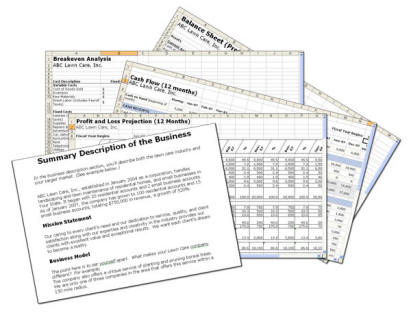Entrepreneur: Anyone who has ever tried to keep an accurate count of how many “cold calls” led to actual, cash-in-your-pocket sales knows it isn’t an easy task. The good news is that measuring success from referrals is actually quite easy. We know this because we’ve designed a networking scorecard for tracking referrals and the business that results from them. You might want to develop a similar one for your own use.
On this card, record the nature and source of each referral, how you followed up on it, how you handled it, and how you followed up with your referral source–through a thank-you note, a phone call, lunch or business. It’s not hard to look back at what you did and analyze how successful you were in getting business from your referrals.
The referral process is about committing to a series of actions designed to create a result not only for you, but also for the other people involved. It’s about measuring the results and improving the system. As long as you track your activities, it’s not hard to measure the results.
Is Your Referral Networking Working? [Entrepreneur]
Month: November 2007
Dealing With Angry Customers

BusinessKnowHow: Nobody makes mistakes on purpose, but they do happen. If you are working in a call center, behind a counter or in any capacity that directly interfaces with customers then you are going to encounter an irate customer at some time. The most common response is to evaluate the merit of the complaint while your are listening to it. Try to curb that common response and replace it with the assumption that the customer has a right to be angry, even before you know the details.
Perhaps the customer feels betrayed because the product or services did not meet expectations. The customer may be angry because he or she made incorrect assumptions that led to improper expectations. The customer may be angry because of previous experiences, previous contacts with your company or simply because the problem occurred at a very inconvenient time in the customer schedule. Regardless of the circumstances, acknowledge the customer has the privilege to be irate. Listen carefully to how the anger is expressed so you can find the root cause of the emotion.
Listen to the inflections and emphasis that the customer places on specific topics to identify the emotional catalyst. Listen to the emotion as well as the words. This will help you to identify the specific item or items that need primary attention. Resolving a technical issue may be only partially effective if it does not also address the customer emotional concerns. It may not be possible to completely resolve the emotional distress, but it is appropriate to acknowledge it.
How to Respond to Angry Customers [BusinessKnowHow]

Surely by now you know how important it is to start strong but how exactly do we start our presentation with a bang? Here’s 7 sure-fire ways to start your presentation that will guarantee to knock the socks off your audience.
1. Open with a humorous/emotional story that leads to your key message
I have seen that been done a lot of times – especially by speech champions – with almost guaranteed success. We love stories, especially those that makes us laugh and have valuable lessons to teach. So when you start with one, we immediately get drawn into it like moth to the flame. Your personal anecdote gives us the opportunity to know you at a deeper level and it adds memorability to your message. Even weeks after your presentation, we will still remember your message because of the story you share.
A variation to this is to tell half a story and then proceed with your points. Once you are done, end off with the other half of your story, which by now will make a lot more sense.
2. Ask a question that gets us thinking
Why is it that some speakers can command the entire floor with ease while others struggle to keep their audience awake?
If this has been a speech opener, it will have set you thinking. You will be curious yourself. The question will trigger some memories and the next thing you know, you will be looking at the speaker for some answers. Such a rhetorical question allows your audience to play an active role in your speech – you get them involved. It keeps them engaged in your speech too as they seek to resolve the gap you have created by the question you ask.
3. Do a demonstration that leads to your message
A demonstration for the sake of doing one is meaningless. However if executed properly, it proves a point which increases your credibility as a speaker and also sets up your presentation for success.
At one of my speeches some time ago, I handed a can of sweets to one of the students in the first row. I instructed him to take one and pass. As planned, there were only enough sweets for the first row, which got the rest of the students sulking. Some of them even complained, loud enough for me to hear, which prompted my first line:
“Many of us wait for things to land on our laps. As a result, we end up get nothing.”
They quickly got embarassed and became quiet. As expected, this statement also had the first row of students laughing, which prompted by second line.
“Many of us also choose within what we are given. You (referring to the students in the first row) could have ask for this box of Godiva chocolates…”
And then I whipped out the box from my jacket and the whole room went silent. The students were all visibly embarassed and were grinning sheepishly as I proceeded my speech. I had no problem engaging them after that since I have effectively proven to them that THEY commit such mistakes all the time.
So the next time you want to prove a point, do a demonstration. Trick them if you need to, but more importantly, show them point blank why this presentation is so important to them.
4. Shock ‘em with facts and numbers
Tell us something that we don’t know and you immediately get our attention. This is why shocking facts and numbers are effective at grabbing your audience attention. A “do you know…” statement works extremely well.
For example, do you know that in New York, if you commit a crime, you have less than one chance in a hundred that you will ever be executed for it? Or in our local context, you may have seen an advertisement that starts off with “Do you know that a thin film of clean standing water of the size of a 20-cent coin is all an Aedes mosquito needs for its eggs to survive?”
So the next time you give a presentation, research for shocking facts or numbers about that particular topic. Go to your trusted google search page and type “[topic] + do you know?” or “[topic] + shocking facts” and viola, you have a winning introduction!
5. Start off with a cartoon or video, funny is optional
A short video clip adds colour to your presentation in more ways than one. It creates visual connection. It engages all five senses. It commands attention. However make sure that the video is not too long, it should not take up more than 10% of your presentation since it is more like a preview. Also remember to pick a video that effectively sets up what you are going to talk about.
In one of the upcoming seminars, the organizers are going to show a clip from “The Truman Show” starring Jim Carey. Recall the part where he discovered that his life was part of a script? He was so adamant about living his own life that he decided to leave. He sailed out to the “sea” hoping to get away, only to hit a white screen. The turning point came when he bravely opened the white door and walked out of the stage set up.
This scene was extremely apt for the seminar since it was themed “Your First Step” and the objective is to encourage all the participants to courageously step out and live their mark. Not only does the video lead to the key message, it creates a memorable anchor, one that will not be easily forgotten by the audience.
6. Pause…
That’s right. Inaction could be one of your most powerful tools as a speaker. Most speakers rush to start either due to their nervousness or lack of experience. However if you observe powerful speakers, especially politicians, they take their time. Every second of silence equates to a pound more authority. As James C Hume commented, “Men, as well, as women, whether tall or short, can gain stature through strategic silence.”
So the next time you give a speech, take your time to walk up the stage. Find the center point and make your strategic pause. Don’t be afraid to look into the eyes of your audience. Smile at them. Once you have ALL their attention, begin with your first line.
7. Do something different (or crazy)!
Like my friend Darren Fleming who turned his back against his audience as he speaks. That sure make his audience love him even more. What counts is the novelty BUT make sure that you can relate it back to the objective of your speech. Click here to understand why Darren did what he did.
Or Darren La Croix, 2001 World Champion of Public Speaking who literally fell on his face to prove his point – failing is no big deal! In fact, one of the reasons why he won was because of his outrageous act. And then there is another speaker in the 80s who stood on stage without speaking for a whole one minute! It was clear that he was suffering from stage fright and performance anxiety. The contest chairperson was forced to come up on stage to escort him down. And just at that moment, the speaker blurted his first line, “When you are in the midst of a battle, do you have friends who continue to cheer you on or do they give up on you within a minute?” (referring to the contest chairperson). Now that was a powerful and poignant point!
And the list goes on. There is no boundaries to your creativity. My challenge to you is to work your creative juices and come up with an act that no one has done before. Even if it fails, at least you had fun!
![]() Eric Feng is the go-to guy if you want to learn how to impress your investors and customers through public speaking. For more tips and tactics that you can use immediately in your next presentation, visit The Public Speaking Blog.
Eric Feng is the go-to guy if you want to learn how to impress your investors and customers through public speaking. For more tips and tactics that you can use immediately in your next presentation, visit The Public Speaking Blog.
Dont Fall for These 7 Traps
 Startup Students: A lot of people have a Great Idea. It might be a new invention or a local service business. Unfortunately for consumers, many would be entrepreneurs are waiting for “the right time” to start their Real Business. They have plenty of reasons (excuses) for the delays. From lack of time to lack of experience, our minds have creative ways of rationalizing our fears.
Startup Students: A lot of people have a Great Idea. It might be a new invention or a local service business. Unfortunately for consumers, many would be entrepreneurs are waiting for “the right time” to start their Real Business. They have plenty of reasons (excuses) for the delays. From lack of time to lack of experience, our minds have creative ways of rationalizing our fears.
Here are 7 common excuses for not starting a Real Business, along with strategies for overcoming internal fear, uncertainty and doubt (”Internal FUD”).
1. I’m too busy right now. I’ll start when I have more time.
2. After I get an MBA, I’ll be ready to start up.
3. I hate sales.
4. I’ll do some research after South Park.
5. I don’t know anything about business.
6. I don’t have startup capital.
7. Before doing anything else, I need to write a business plan.
7 Lies That Prevent Your Great Idea from becoming a Real Business [Startup Students]
How Long Is Your Business Plan?

About.com: One of the many questions about business planning I receive is how long is a typical plan? The length of a typical business plan can greatly vary from 10 pages to a 100-page document. It depends on the intended use of the plan and its audience. An internal business plan for your company will exclude areas such as management team experience and be heavier on the implementation side. A basic plan for the banks will usually run 20or more pages. The executive summary shouldn’t exceed 3 pages.
Business Plan Length? [About.com]